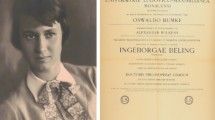Abstract
Reward learning in honeybees initiates a sequence of events which leads to long-lasting memory passing through multiple phases of transient memories. The study of memory dynamics is performed at the behavioral (both natural foraging behavior and appetitive conditioning), neural circuit and molecular levels. The results of these combined efforts lead to a model which assumes five kinds of sequential memories, each characterized by a set of behavioral and mechanistic properties. It is argued that these properties, although reflecting general characteristics of step-wise memory formation, are adapted to the species-specific adaptations in natural behavior, here to foraging at scattered and unreliable food sources.
Similar content being viewed by others
Author information
Authors and Affiliations
Additional information
Accepted: 12 May 1999
Rights and permissions
About this article
Cite this article
Menzel, R. Memory dynamics in the honeybee. J Comp Physiol A 185, 323–340 (1999). https://doi.org/10.1007/s003590050392
Issue Date:
DOI: https://doi.org/10.1007/s003590050392




